Is orange a good color for a bedroom in Feng Shui? This is a question many people ask, and the answer isn't simple. Orange is a strong color that represents the Fire Element, which brings energy and movement. Its power can be great for creating passion and happiness, but you need to use it carefully, especially in a room meant for sleep. Use it wrong, and you might create a space that makes you feel restless. Use it right, and you can make a room that feels both lively and peaceful. This guide will teach you everything you need to know. We will look at how orange affects energy, discuss the good and bad points of using it in bedrooms, examine different shades of orange, and learn how to place it in the best spots. By the end, you'll feel confident using this powerful color to balance passion and peace in your bedroom.
Orange's Energy Effects

To use orange well, we need to understand how it works in Feng Shui. It's more than just a color - it carries a specific energy that affects the flow of energy (called Qi) in your space and in your life.
Orange is mainly a Fire Element color. The Fire Element has qualities that are active and outward-focused. It controls parts of our lives that involve being seen and connecting with others. Understanding these qualities helps you use orange correctly.
- Passion and Romance: Fire is the element of the heart. It creates desire, closeness, and romantic connection.
- Energy and Life Force: It represents high energy, excitement, and the driving force behind action and success.
- Growth and Self-Expression: Fire energy moves up and out, encouraging you to express yourself, communicate, and interact with others.
- Fame and Being Noticed: This element relates to how others see you, your reputation, and your social position.
Orange is also a high-energy, Yang color. In Feng Shui, we try to balance Yang (active, bright, masculine) and Yin (calm, dark, feminine) energies. A bedroom should be mostly Yin since it's a place for rest and renewal. This creates the main challenge of using orange: its strong Yang nature goes against the calm, restful energy a bedroom needs. From a psychological view, orange makes people feel joyful, hopeful, creative, and warm. It's a social and uplifting color, which works great in a living room or kitchen but can be hard to manage in a room designed for sleep.
The Great Debate
Deciding to add orange to a bedroom is an important choice, with good reasons on both sides. It's not simply "yes" or "no" - it depends on your personal goals, your current life situation, and how sensitive you are to energy influences. Looking at the potential benefits against the possible risks is crucial for making a smart choice that truly helps your well-being.
The "Yes" Side
When used thoughtfully, orange can bring a powerful and positive change to a bedroom's energy. For many people, the benefits are worth the careful planning needed. One of the most wanted benefits is its ability to boost romance and closeness. For couples who feel disconnected or whose relationship has become comfortable but lacking passion, a small, well-placed touch of orange can act as an energy booster. It stimulates the Fire Element, re-energizing the partnership and encouraging deeper connection.
Beyond romance, orange has a strong ability to create a welcoming and joyful feeling. In bedrooms that feel cold, plain, or face north with little natural light, orange can instantly add warmth and coziness. It's an optimistic color that can lift spirits and make the bedroom feel like a happy, inviting retreat rather than just a place to sleep. This can be especially helpful for people who tend to feel sad or who live in colder climates. Finally, for those who use their bedroom for more than just sleep - perhaps for writing, reading, or creative thinking - orange can be a wonderful stimulant. It sparks new ideas and encourages creative thought, turning a corner of your room into a mini-studio for personal growth and inspiration.
The "No" Side
The same properties that make orange appealing are also the source of its potential problems. The main concern is the risk of disrupting sleep. As a high-Yang color associated with peak energy, too much orange can be very overstimulating to the nervous system. This can show up as restlessness, trouble falling asleep, anxiety, or even serious insomnia. For people who are already light sleepers or prone to anxiety, even a moderate amount of orange can be enough to throw their sleep cycle off balance.
This intense Fire energy, if not properly balanced, can also fuel irritation and lead to more arguments. While a little spark is good for passion, an uncontrolled fire can lead to crankiness, impatience, and conflict. If a couple is already going through a tense period, introducing a strong Fire Element color like orange can make the situation worse rather than better. Lastly, from a purely visual perspective, orange is a commanding color. It demands attention and can easily overpower a space that is meant to be a sanctuary for the senses. A bedroom should be a place where your mind and body can unwind. Too much orange can create sensory overload, making it difficult to relax and de-stress at the end of the day.
The Orange Shade Guide
Not all oranges are the same. The general advice to "use orange as an accent" is a good start, but true skill lies in understanding the differences in the orange spectrum. The energy quality of orange changes dramatically as it shifts from a bright, pure color to a more muted or earthy tone. Choosing the right shade is the secret to successfully adding this color to your bedroom. An earthy terracotta has a completely different effect than a bright tangerine. This guide provides a better toolset to help you select the exact right shade that matches your specific goals.
| Shade Name | Energy Quality | Best For... | Best Use in Bedroom |
|---|---|---|---|
| Soft Peach / Apricot | Mostly Yin, gentle Yang | Nurturing romance, creating soft warmth, healing | Throw pillows, a single lampshade, delicate patterns in bedding, or a small piece of art. |
| Earthy Terracotta / Burnt Orange | Balanced Yin-Yang (Fire + Earth) | Grounding passion, stability in relationships, security | A single velvet armchair, pottery, a chunky knit blanket, or a feature on a patterned rug. |
| Vibrant Tangerine / Bright Orange | Strong Yang | High energy, creativity, social spark, celebration | A single, very small piece of art; a tiny detail on a vase. Use extremely sparingly. |
| Muted Pumpkin / Persimmon | Mostly Yang, slightly earthy | Creating cozy conversation, connection, and harvest-like abundance | Accent cushions against a neutral sofa, a decorative tray on an ottoman, or as part of a fall-themed decor update. |

The key takeaway from this spectrum is clear: the more muted and earthy the shade of orange, the more suitable it is for a bedroom's restful environment. Shades like soft peach and apricot carry the warmth of the Fire Element in a much gentler, more Yin package, making them excellent for creating soft, nurturing romance without being disruptive. Shades like terracotta and burnt orange are brilliantly balanced. They contain the Fire Element, but it is heavily grounded and stabilized by the influence of the Earth Element, making them perfect for creating a passionate yet secure and stable feeling. The highly Yang, vibrant shades like tangerine should be reserved for the smallest of accents, if used at all in the bedroom, as their energy is simply too active for a primary resting space.
Smart Color Placement
Knowing which shade of orange to use is half the battle; knowing where and how to place it is the other half. The goal is to introduce the positive qualities of the Fire Element without allowing its Yang energy to dominate the calming Yin nature of the bedroom. This requires a strategic and measured approach.
The first and most important principle is the 20/80 accent rule. In a bedroom, orange should almost always be an accent color, making up 20% or less of the room's total color scheme. The remaining 80% should be dedicated to calming, neutral, and Yin-dominant colors like beiges, creams, soft grays, or muted blues. This ensures the bedroom remains a fundamentally restful space, with orange acting as a point of energetic focus rather than an overwhelming theme.
For more precise placement, we can turn to the Bagua, the traditional Feng Shui energy map of a space. You can lay the Bagua over the floor plan of your bedroom, aligning the bottom of the map (Knowledge, Career, Helpful People) with the wall that has the main door.
* The most powerful place to add an orange accent for a relationship is in the Kun area, or the Love & Marriage corner. This is the far-right corner of the room from the perspective of standing in the doorway. A small orange object here, like a pair of peach-colored candles or a small piece of art with terracotta tones, can directly energize your partnership.
* If your goal is to be seen more positively or to enhance your reputation, a tiny touch of orange can be placed in the Li area, or the Fame & Reputation sector. This is the center of the far wall opposite the door. However, use extreme caution here, as this area is naturally a Fire Element sector, and adding more can be too intense.
When it comes to the "how," think small, smart, and safe. The easiest and most flexible way to introduce orange is through textiles.
* Throw pillows, a folded blanket at the foot of the bed, or a rug that includes an orange pattern can add the desired energy. The great advantage of textiles is that they can be easily changed or removed if the energy feels too strong.
* Artwork is another excellent method. A painting or photograph that features orange allows you to bring in the color's energy in a contained and beautiful way.
* Small decorative objects like vases, a decorative tray, or a lacquered box can serve as perfect, subtle accents.
What should you avoid? We strongly advise against large-scale applications of orange in the bedroom. This includes a full accent wall, wall-to-wall carpeting, or a dominant orange duvet cover or curtains. These large surfaces radiate too much Yang energy, making it nearly impossible to maintain a peaceful, restful atmosphere.
Client Case Study
To show these principles in action, let's look at a common scenario we encountered. A couple, "Mark and Lisa," came to us for a consultation. They had been together for over a decade and felt their relationship had lost its "spark." They wanted to use orange in bedroom feng shui to rekindle passion but were hesitant because Mark was a very light sleeper and highly sensitive to his environment.
Their initial attempt, made before consulting us, was a classic mistake. They bought a beautiful but intensely bright, tangerine-orange duvet cover. The effect was immediate and negative. Mark reported feeling "wired and restless" at night, finding it difficult to unwind. Lisa, while less sensitive, agreed that the color felt jarring and a bit aggressive, the opposite of the romantic, intimate feeling they were hoping for.
This is a common challenge we see. When Mark and Lisa reached out to THE QI FLOW team, our first step was to analyze their bedroom's energy flow and their personal needs. We knew a high-Yang color was disrupting the essential Yin energy required for rest. Our team helps users solve these exact Feng Shui problems by moving beyond generic rules to create personalized, balanced solutions that honor both the space and the people within it.
Our strategic recommendations were implemented in three phases:
1. First, we advised them to replace the overwhelming tangerine duvet. We suggested a base of luxurious, calming, neutral bedding in a soft, earthy beige. This immediately re-established the bedroom as a Yin-dominant, restful space.
2. Next, to bring in the desired passion, we recommended two small, square velvet pillows in a deep, rich burnt orange. This shade grounded the Fire energy with an Earth element quality, making it feel stable and sensual rather than frantic. We advised them to place these on the bed during the day and remove them at night if Mark still felt any restlessness.
3. Finally, to specifically activate their relationship energy, we had them place a single, elegant glass vase with a subtle hint of soft peach on their dresser, which was located in the Love & Marriage corner of their room.
The outcome was transformative. The room felt instantly warmer and more inviting, but in a sophisticated and calming way. The couple reported that the subtle, rich accents created a sense of intimacy and luxury, enhancing their connection without sacrificing Mark's sleep quality. They successfully rekindled the spark without setting the house on fire, energetically speaking.
Harmonious Color Pairings
Orange does not exist alone. Its energy is strongly influenced by the other colors and elements it is paired with in a room. Understanding the Five Element Theory provides a sophisticated framework for creating a color palette that is not only visually appealing but also energetically balanced and supportive. Orange is a Fire Element color, and its behavior changes based on how it interacts with Wood, Earth, Metal, and Water.
Harmonious pairings are based on the Productive Cycle of the elements, where one element nourishes and creates the next.
* Earth Element (Beiges, Browns, Sandy Tones, Terracotta): This is the most important and beneficial pairing for orange in a bedroom. In the Five Elements cycle, Fire creates Earth (leaving behind ash). This means that earth tones have a natural ability to ground and stabilize the high-flying energy of orange. Pairing orange accents with a base of beige, cream, or soft brown contains the Fire, making it feel warm and secure rather than agitating.
* Wood Element (Greens, Light Wood Tones): Wood fuels Fire. This pairing should be used with awareness. Small touches of green alongside orange can support its joyful, creative energy in a positive way. However, using too much of both can make the Fire energy in the room even stronger and more active, which might be counterproductive for a restful space.
Conversely, some combinations should be used with caution or avoided, as they are based on the Destructive Cycle, where elements weaken or clash with each other.
* Water Element (Blues, Blacks): Water extinguishes Fire. From a Feng Shui perspective, pairing large amounts of bright orange and deep blue can create an energetic "clash" in the room. This can manifest as a feeling of tension, conflict, or instability. While a navy and burnt orange combination can be visually stunning, it's best to ensure one color is clearly dominant and the other is a minor accent to prevent this energetic conflict.
* Metal Element (Whites, Greys, Metallics): Fire melts Metal. This relationship is draining. A stark, clinical white-and-orange combination can feel harsh and jarring rather than harmonious. While small metallic accents like brass or gold work beautifully with orange by reflecting light and adding a touch of luxury, a room dominated by grey or white with orange accents can feel energetically depleting.
Final Takeaways
Using orange in bedroom feng shui is not about following rigid, unchangeable rules. It is an exercise in mindful intention, balance, and listening to your own intuition. When used with skill and awareness, this vibrant color can be a powerful and beautiful tool to create a bedroom that is both a passionate sanctuary and a peaceful retreat. To ensure you get it right, keep this final checklist in mind.
Your Orange-in-the-Bedroom Checklist:
* Start Small: Always begin with small, inexpensive, and easily replaceable accents like a single pillow or a small vase. Live with it for a while before committing to anything larger.
* Choose Wisely: The shade matters more than anything. Opt for muted, earthy shades like terracotta, burnt orange, or soft peach over bright, neon, or pure oranges for a more grounding effect.
* Place Strategically: Use the Bagua map to guide your placement. Focus on the Love & Marriage corner for relationship enhancement, and do so with a small, meaningful object.
* Balance with Earth: The secret to taming orange's fire is to pair it with grounding Earth Element colors. Creams, beiges, and sandy tones create the perfect stabilizing backdrop.
* Listen to Your Body: Ultimately, you are the best judge. Pay close attention to how the color makes you feel. Does the room feel energizing and warm, or are you feeling restless or agitated? Trust your feelings and adjust accordingly.
The successful use of orange in bedroom feng shui proves that you can have both passion and peace. It's about understanding the energy you are inviting into your space and ensuring it serves your highest good, creating a room that truly nurtures your sleep, your spirit, and your relationships.
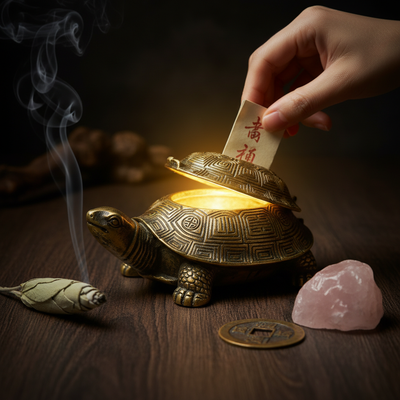
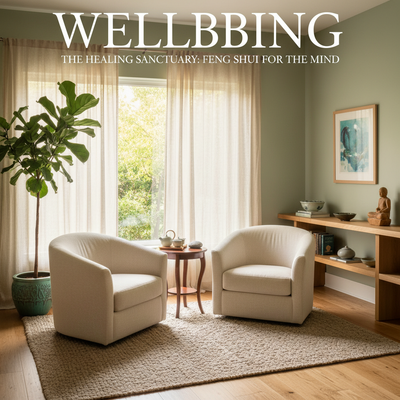
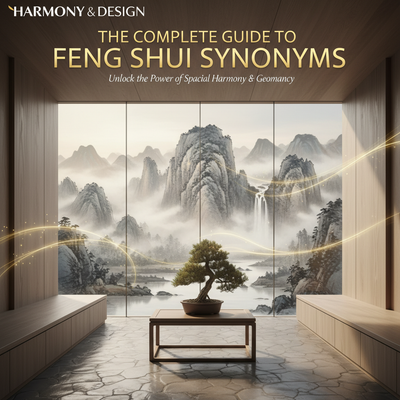

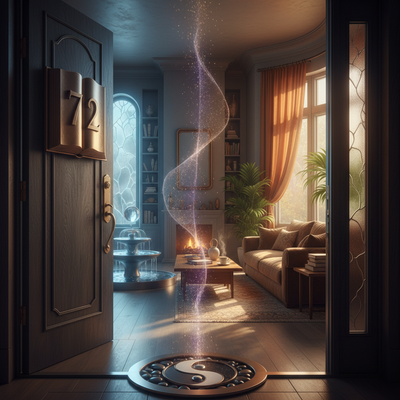
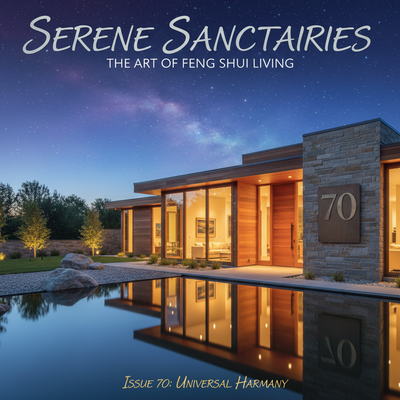

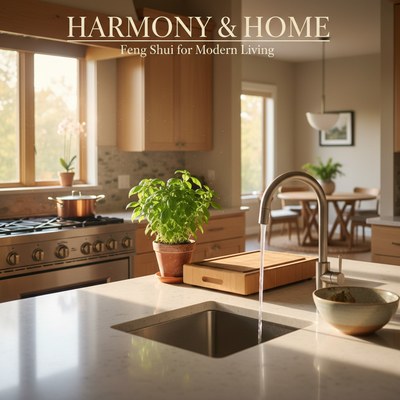
0 comments